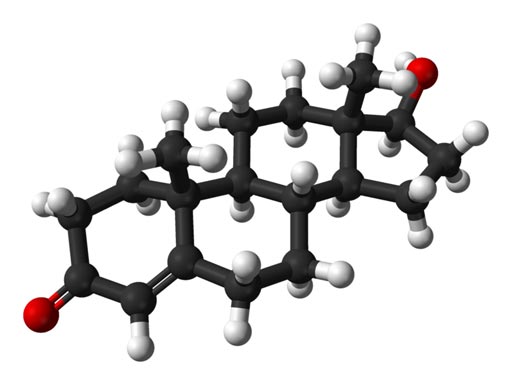New Defined Reference Range for Testosterone Levels Established
By LabMedica International staff writers
Posted on 24 Jan 2017
Through a landmark study based on cohorts in the USA and Europe, researchers have established a harmonized reference range for testosterone levels in men to help limit misdiagnoses and unnecessary treatments. This can be particularly helpful in identifying patients with hypogonadism, as the lack of both defined reference ranges of testosterone and of standardization of hormone assays has made diagnosing hypogonadism a difficult task.Posted on 24 Jan 2017
A large study of more than 9,000 men has established harmonized reference ranges for total testosterone in men that, according to the new study, when applied to assays that have been appropriately calibrated will effectively enable clinicians to make a correct diagnosis of hypogonadism. Characterized by low testosterone levels, hypogonadism can lead to sexual dysfunction, decreased muscle and bone strength, less energy, and lower fertility. The correct diagnosis and effective treatment and prevention of hypogonadism as well as many other diseases depend on accurate measurement of hormones.

Image: A ball-and-stick model of the testosterone molecule (C19H28O2) as found in the crystal structure of testosterone monohydrate (Photo courtesy of Wikimedia).
“Well-defined reference ranges are at the heart of clinical practice and without them clinicians can make erroneous diagnoses that could lead to patients receiving costly, lifelong treatments that they don’t need or deny treatments to those who need them,” said lead-author Shalender Bhasin, MD, of Brigham and Women’s Hospital, Harvard Medical School, “Our data establish a reference range for testosterone. These data also show that variations in assays are an important contributor to variation in testosterone levels in cohorts from different geographic regions. Clearly we need standardization in all hormone assays.”
In the study, the researchers obtained serum testosterone samples from men who had already had their testosterone levels assayed locally. The samples were sent to the Centers for Disease Control and Prevention’s (CDC) Clinical Standardization Programs at the National Center for Environmental Health where testosterone concentrations were measured using a higher order liquid chromatography tandem mass spectrometry method.
They used the results from both measurements to generate harmonized values, which were in turn used to derive standardized, age-specific reference ranges overall. The harmonized normal range for testosterone in a non-obese population of European and American Men, 19-39 years, is 264-916 ng/dL.
“Without harmonized reference ranges and standardized assays, tests can lead to misdiagnoses and unfortunately this happens every day around the world,” said co-author Hubert Vesper, PhD, co-chair of The Partnership for the Accurate Testing of Hormones (PATH), “Now we have a reference range for testosterone, and it’s important that we take this into consideration in the tests that clinicians and patients depend on for accurate diagnoses.” PATH provides technical and scientific support to the CDC Steroid Hormone Standardization Program, conducts educational activities on hormone measurement, and advocates for the universal use of standardized hormone tests, where available.
The study, by Travison TG et al, was published January 10, 2017, in the Journal of Clinical Endocrinology & Metabolism.







 Analyzer.jpg)

 assay.jpg)



